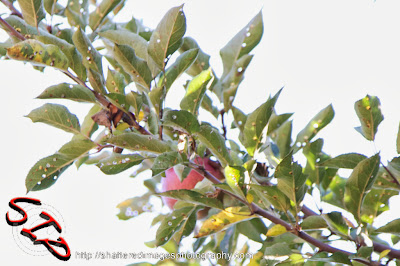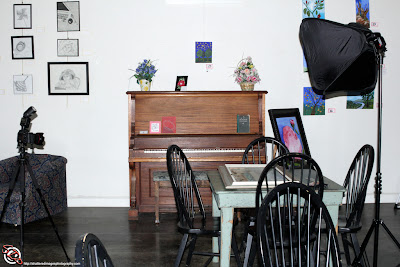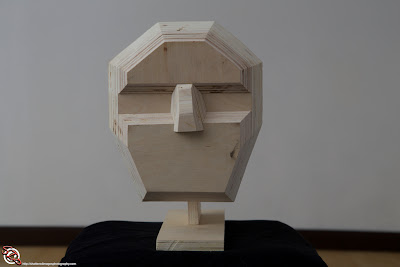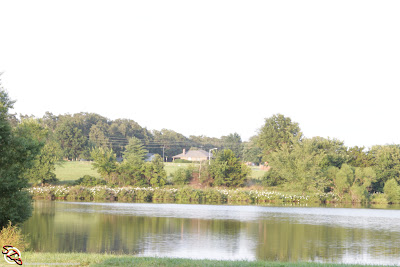One of the more common mistakes beginning photographers make is not getting good color balance. In most situations, particularly with cameras introduced in the last 3 years the auto white balance function of the camera does a fairly good job most of the time, where it tends to fall flat are areas with mixed light temperatures, so after a brief intro to what color temperature is I am going to focus on ways to correct mixed light situations.
So what is Color Balance? To understand color balance (also commonly incorrectly called white balance) you need to first understand that all light has color. The Color of the light is referred to as color temperature and is measured in degrees kelvin. The warmer the light, that is the more yellow, orange or red the light is the lower the color temperature, as the light gets closer to white and then blue the temperature in degrees kelvin goes up. This seems backwards at first glance, but remember when iron is smelted it starts with a low red glow as it gets hot enough to forge it moves to letting off orange light and when it is hot enough to pour iron starts pushing into the yellow colors. Another way to remember that the high temperatures are the whites and blues is to think of arc welders or lighting. Electric arcs are one of the hottest things we can observe, with temperatures exceeding those of the surface of the sun, and they are in the white and blue color space. For a more complete run down of color temperature click here.
Now you have an idea of what color temperature is, how does it work with color balance? Color Balance is matching the light sources so they all of the same or very similar color temperatures so the camera can then shift the sensor to read white objects as white. It is a subtle but important difference between color balance, matching the light sources, and white balance, setting the camera to read the light sources correctly, but it is an important distinction. It is also why the auto white balance setting will always fail in mixed light. The other common mistake is having a camera set to daylight (essentially white light) and to take photos under artificial light, this is what gives photos that ugly yellow, yellow orange, or yellow/green cast.
Modern artificial lights tend to be pretty close to 3000k without any green tint. As this gets more common, lower end cameras are tending to have one artificial light setting. High end cameras ,on the other hand, may have four or five artificial light settings (not counting flash, which is generally balanced for daylight). These multiple settings can more closely match the most common color temperatures of incandescent (orange/yellow to yellow) and florescent (yellow to yellow with a green tint) lights. Having these multiple presets can be a quick way to find a suitable white balance if you can not preform a custom white balance. I am not going to go into setting a custom white balance beyond mentioning it is a good idea to use a grey card, because different manufactures have different methods for achieving a custom white balance reading. Consualt the camera’s manual.
For this post I am going through a quick exercise of matching a 5600k Speedlite with modern florescent recessed canister lights. Here is a quick look at the equipment used. For the flash I used a Canon 580EX-II and to match the color of the ambient light I used LumiQuest gel holder. In the photo the gels on the left are used for color correction, The two at the top are a one stop and a two stop neutral density gels which can be used to cut flash intensity on flash units with a fixed power output. The gels on the right are used for Creative Lighting with Color (an upcoming post). For this entry I am only going to speak about the gels on the left. Starting at the top and moving counter clockwise we have a 1/2 stop (or cut) Color Temperature Green (CTG) followed by a 1/4 cut CTG, 1 cut Color Temperature Yellow (CTY), 1 cut Color Temperature Orange, 1/2 cut CTO, 1/4 cut CTO and finally a 1/2 cut Color Temperature Magenta.
 |
| Speedlite with Gel Kit |
As a general rule the CTY and one of the CTGs will be used together to balance older florescent lights, newer florescent bulbs do not tend to have the green tint. The CTO,s will be used for incandescent, but actually look to see what color/s are most prevalent. The CTM is used on your subject, usually used as fill, when the subject is placed in a green screen environment. In a green screen environment background light reflects off of the screen and will give the subject a green cast. By using a CTM on the subject the green tint is neutralized. If you use photo editing software in the white balance section you have probably noticed a slider that goes from yellow on the left to blue on the right and a second slider that goes from magenta on the left to green on the right. These colors are directly opposite each other on the color wheel and mixing them together neutralizes there impact. In effect your camera does this as its white balance function.
Ok, now you have the theory, lets look at it in practice. All four of these images are just a succession of photos of a white wall. The first image below is the color of the light in the room from the canisters lights when the camera is balanced for the color of the flash. The second images shows the flash firing and the ambient light being crushed out by the camera’s high shutter speed. When this is an option this is the best fix for the light. But it is not an option if you want a slower shutter speed to allow motion blur, or if you are shooting in an environment where blasting everything to white would not look natural, like a club for instance where doing so would destroy the ambience. I have included the histograms so you can better understand the differences in the light color that is causing the shift in the light.
 |
| Image 1 and Image 2 |
Looking at the first image you can see the light in this room has a definite orange cast to it, and looking at its histogram you can see how spread out the different colors of light are. Looking at the second image you can see how the light casts a gradient across the wall, even though the histogram covers a large part of the graph it is fairly uniformly grey as all of the colors are mixed fairly evenly giving us white light.
The third and fourth images show blending and then correcting the light. In the third image the flash has not been adjusted but the shutter has been drastically reduced so that both the flash and the ambient light can expose the image. The gradient in this image from bottom right to top left clearly shows why the auto white balance in the camera can not adjust to this situation. There is not one uniform light color for it to adapt to and correct. You can also see how the histogram is all over the place even though this is just a photo of a white wall. The fourth image was taken with a 1/4 CTO placed over the flash and the white balance in the camera shifted from flash to florescent, this is because the flash is now pretty closely blended to the ambient light of the room which is pretty close to the florescent preset.
 |
| Image 3 and Image 4 |
Looking at the histogram we can tell it has not been perfectly balanced, but an exact balance is not possible with gels. At any rate it is much closer now the color is no longer painful to look at with only minor corrections needed in the computer. Corrections which can be applied across the whole image rather then trying to blend in different layers of correction, a much more difficult task.
For these last two images I raised the flash to above the eye line as that is more typical for portraiture, as a result the gradient shift from the third images is seen here in the fifth images from top right to bottom left. The fifth image gives an idea of how difficult it would be to correct the color balance in the computer rather then only needing a minor adjustment to the over all white balance of the sixth photo taken in a close color balanced situation. The complete chaos in the histogram of the fifth image gives a clearer picture, even though the scene is very color neutral the histogram is all over the place.
 |
| Image 5 and Image 6 |
All six of these images were shot on a the Canon EOS 6D camera with the 24-105 f4 L. The lens was set to 58mm the camera was set to ISO 400, f8 and a shutter of .4 seconds with the exception of the second image which had a shutter of 1/180th of a second to crush out the natural light. The flash was located 45 degrees camera right and was set to manual 1/32 power 14mm.
Follow Us














.jpg)













